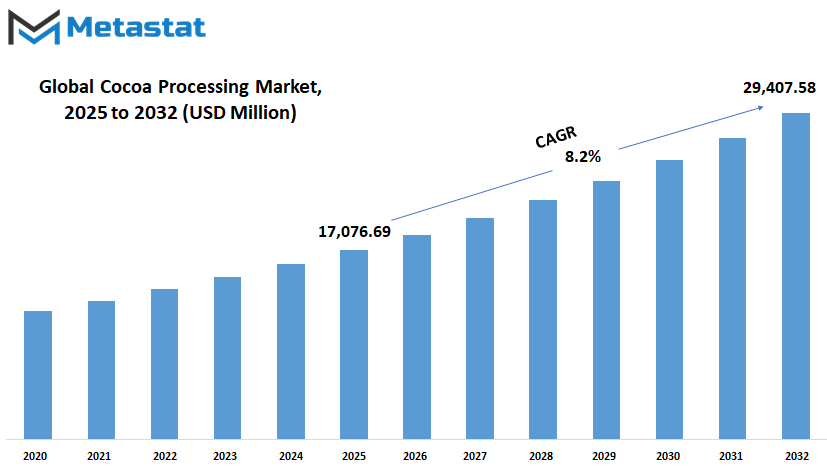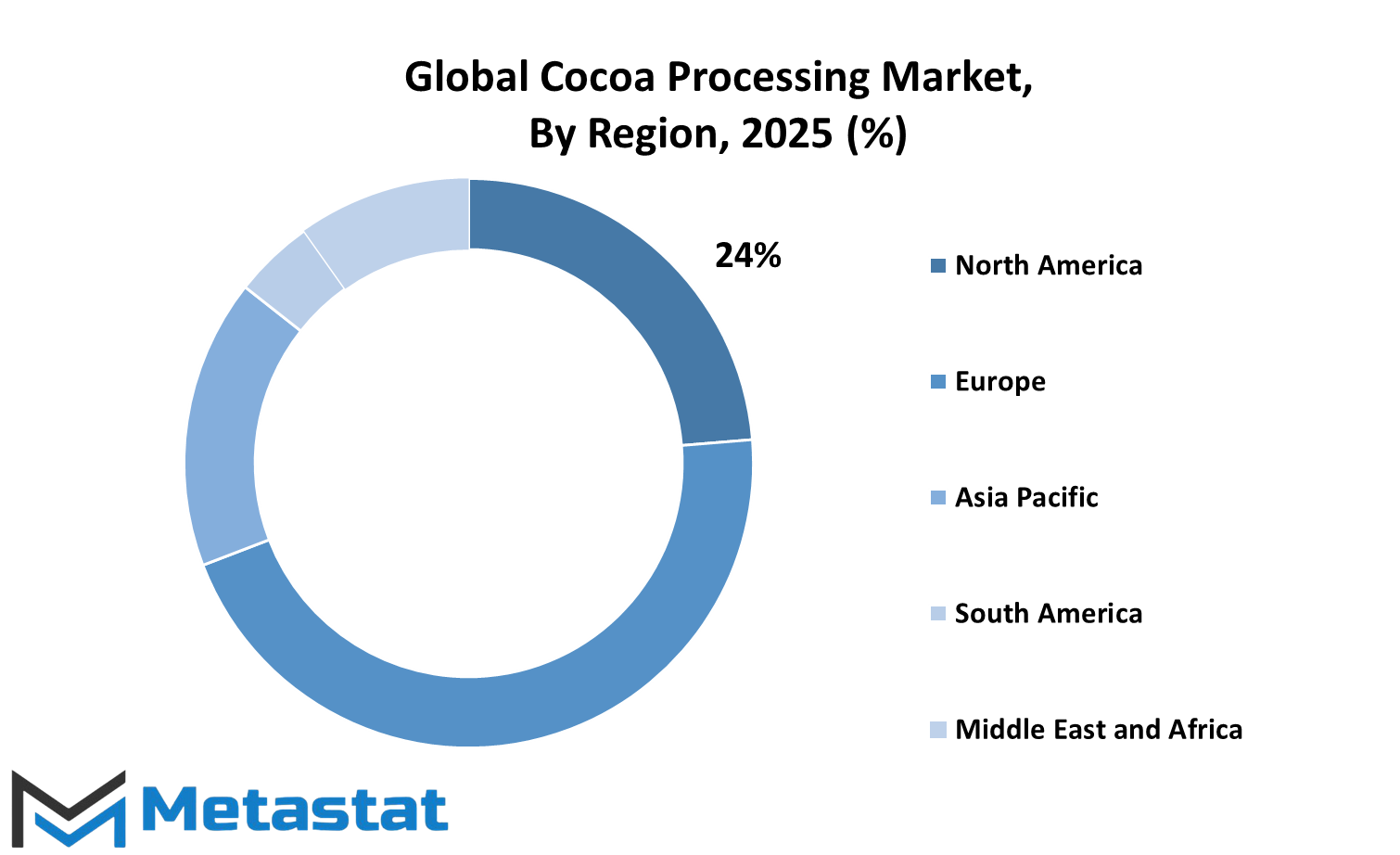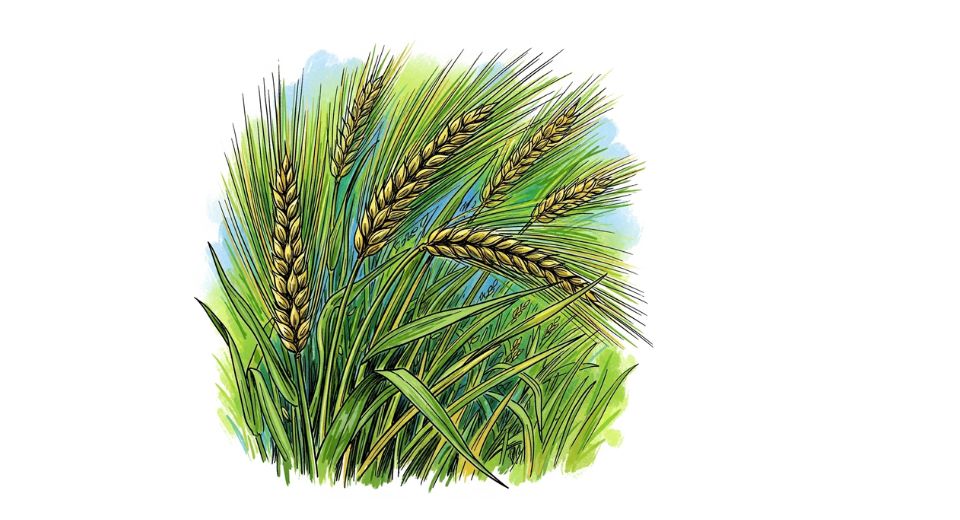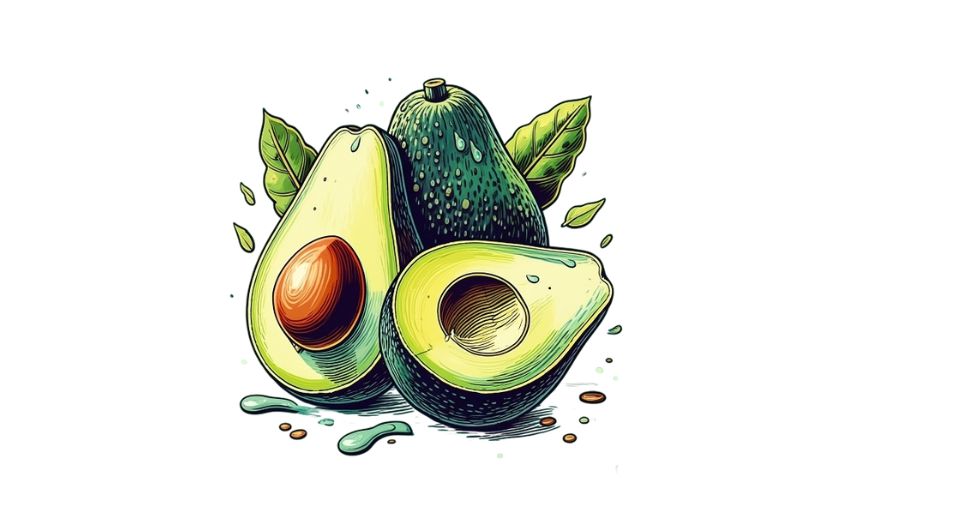MARKET OVERVIEW
The Global Cocoa Processing market would thus continue to change with the techno-economic advances that will determine production efficiency and product innovation. The processing involves the fermentation and drying of cocoa beans, followed by roasting, winnowing, and grinding. Each of these steps imparts flavor and quality to the finished product and requires precision and technical expertise to continue. Manufacturers are set to adopt more mechanized and advanced practices with the aim of maximizing yield while retaining specific characteristics of their cocoa. In this way, an increasingly refined process would meet world market demands of different kinds.
On the Global Cocoa Processing front, the main priority lies in marketing chocolate and chocolate-like products through various industrial segments. It involves the actual movement of raw cocoa beans that are processed into intermediary products such as cocoa liquor, cocoa butter, and cocoa powder, which are highly accepted in production for confectioneries, bakeries, beverages, and cosmetics. Cocoa processing will maintain high quality, consistency, and flavor requirements for the developed products, specifically given the growing demand for such cocoa ingredients in many industries. The applications of cocoa derivatives expand the market beyond foods and into various industries.
The Global Cocoa Processing market would continue to draw heavily from cocoa-growing regions such as West Africa, Latin America, and Southeast Asia. However, the processing facilities are situated all over the world, especially in the area of prodigious chocolate consumption and industrious capabilities. Because of this international nature of the market, solid trade networks are in place for the uninterrupted and free-flowing transfer of raw and processed cocoa across national boundaries. It is in this increased interlacing of supply chains that logistics and strategic alliances will have a profound bearing on operational dynamics.
Future product differentiation is likely to become more pronounced with environmental sustainability of cocoa sources receiving increased focus from stakeholders. As consumers realize the ethical issues surrounding sourcing with regard to the environment, firms will increase their efforts to implement responsible sourcing initiatives and improve supply chain transparency. It will fasttrack the increasing demand for certified cocoa, compelling producers to adapt processing methods to try as much as possible to preserve the natural flavor and nutritional properties. Such trends will then kick-start innovations in developing niche cocoa products for varying matching with new consumer trends.
Looking ahead, the production modes will change in the cocoa processing global market because of certain needs on efficiency and quality improvements. It will also include enormous penetration of other advanced technologies, namely automated processing systems and precision fermentation techniques.
Furthermore, the market would gain access as diversification would find cocoa derivatives within specialty products beyond those of food or beverage. For instance, cocoa butter as a moisturizer will be dominantly used in the cosmetics industry. Because of its antioxidant capability, the cocoa powder will have a supporting role within health supplements and functional foods. New benefits of cocoa components uncovered by research may add to the applications of these ingredients in the pharmaceutical and nutraceutical fields.
With the advancement of the Global Cocoa Processing market, collaborative effort between producers, processors, and manufacturers makes this simplest and most efficient way of doing things in most aspects of product quality and sustainability. Ethically incorporated technological innovations would make a strong stand in the global economy. The transformation of markets would depend on emerging customer configurations and capacities for processing. Therefore, it will form the future direction that cocoa-based products will take in the world.
Global Cocoa Processing market is estimated to reach $29,407.58 Million by 2032; growing at a CAGR of 8.2% from 2025 to 2032.

GROWTH FACTORS
The forthcoming period is promising substantial growth in the cocoa processing market owing to the confluence of rising demand, changing consumption patterns, and technological innovations. The very rise in demand for chocolate and cocoa-based products globally makes the expansion of the market an inevitable factor. Premium organic cocoa products have begun to attract consumers increasingly, which is an example of the global trend toward healthier and sustainable options. The shift in consumer preference encourages producers to innovate and enhance their offerings toward improved quality and sustainable practices.
The burgeoning acceptance of chocolate within cultural and lifestyle dictates of various peoples serves as a reason for increasing market demand worldwide, hence the demand for cocoa processing. Demand influences the need for cocoa processing and gives assurance of a regular flow of supplies for high-quality ingredients for confectionery, beverages, and many other cocoa products. Dots have appeared beside the growing trend of consumption of organic premium cocoa products across regions. Consumers are now getting more concerned about the origin and methods of production of their products and have begun to prefer ethical and quality products. This gradual change in preference is going to make it increasingly clear to the manufacturers that sustainability and transparency are going to be one of the pivotal contributors to market dynamics.
Other factors counteracting the growth of the global cocoa processing market are the emerging cocoa prices. Changes imposed by climate, wars, and inequitable production would lead to price fluctuations. And these fluctuating prices will, in one way or another, affect profitability and supply chain viability, thereby staving the sector's growth. Moreover, the further legislative requirements on social fairness and sustainability concerning labor practices in cocoa farming are aggravating the situation. Compliance entails heavy investment and inordinate capacity expansion, which may burden the smaller cocoa producers.
The market is well-positioned for accessing endless possibilities due to advances in processing technologies. Innovations aiming at efficiency and product quality are changing cocoa-processing technologies. The improved processes minimize waste, reduce production costs, and help to sustain the full flavor and nutrient profile of cocoa, benefiting both production companies and customers wanting higher quality products.
The global cocoa-processing market has several key players engaged in strengthening their positions through innovations, alliances, and geographical extensions. Such actions develop new prospects in this line of business that promise efficiency and sustainability. As opportunities increase with demand and technology advancement, the cocoa-processing world is bound to experience more evolutions.
MARKET SEGMENTATION
By Type
Coming years would bring the Global Cocoa Processing market on different grounds and heights, owing to changing consumption preferences, advances in technology, and demand burdening cocoa products consumption. Cocoa, the principal ingredient in chocolate and many other food items, undergoes a detailed processing cycle to be derived in varied forms used in manufacturing from raw cocoa beans. This cocoa processing market segment is classified into types, such as cocoa liquor, cocoa butter, cocoa powder, and other related products. Each of these particular types has its peculiar use in diverse industries, thus determining demand and supply patterns in cocoa worldwide.
Cocoa liquor is one of the most important products obtained from cocoa beans. It is obtained by grinding roasted cocoa beans and turning them into a thick, liquid paste. This is the base ingredient in the production of both cocoa butter and cocoa powder. The demand for cocoa liquor is likely to remain strong owing to the increasing popularity of cocoa products worldwide. Emerging production techniques will in future lead to higher efficiencies in processing which will help manufacturers meet increased demand without affecting quality. This would open the doors for smaller producers as well to be part of the diversification process across the value chain.
The other important category is cocoa butter, which is characterized by a very smooth touch and very high durability. It is widely used in the food industry, along with cosmetics and pharmaceuticals, most importantly because of its moisturizing properties. Several brands adopting natural and sustainable ingredients in their products would also boost the cocoa butter segment in the future. Adoption by the producers of more sustainable practices in production and processing is, however, required in this regard. All this will lead to increasing numbers of ethically sourced, quality cocoa butter products in the Global Cocoa Processing market.
This cocoa powder is produced by forcing cocoa liquor to yield most of the cocoa butter, which subsequently leaves a dry cake that is ground to a fine powder. This product finds application in baking, beverages, and flavored snacks. Health-conscious trends are emerging which would increase demand for unsweetened cocoa powder sourced naturally. Through innovations in flavor and nutrient benefits, specialized personalized cocoa powders could be created and marketed thus increasing the product scope.
Besides the main types, there are other cocoa-derived products available that create diversity in the market. Examples of these include cocoa pearl, shell, and extract types, and all have their own unique functions in different industries. The evolving global demand for cocoa includes cocoa-based items, and with time, these by-products may have new uses, which will add value to the market.
They may be forecast for the Global Cocoa Processing market on the next period to strike a balance between tradition and innovation but within the tradition of sustainable choices and modern technologies. A different consumer expectation would shape the growth of the industry, which remains a significant part of global agriculture and manufacturing.
By Application
The market of Global Cocoa Processing market is showing healthy growth, as it has application in practically every industry. Cocoa has existed as one of the most important ingredients to a whole slew of products for centuries because of its unique flavor and excellent properties. With the passage of time and further innovation from industries, demand for processed cocoa will increase and greatly affect the market.
Chocolate industry is one of the major bases of this market. Chocolate is an ardent favorite of the whole world, and one can't deny the very fact that demands are very lively. This high demand is usually experienced in terms of premium and artisanal chocolates that customers are generally trying to shift towards. The healthier alternatives of chocolate, such that with greater cocoa content and lesser sugar, are likely to add to the increase here. Furthermore, there will be increased emphasis on ethical and sustainable means of sourcing cocoa; hence, the industry is going to seek enhanced processing techniques.
From cookies and cakes to pastries and desserts, cocoa contributes vastly to the confectionery and bakery industry. Since the world continues to experiment with combination flavors, the volume will only grow in exclusive cocoa flavors. Differentiation will include innovations in bakery products, such as gluten-free or plant-based, so that processors are urged to diversify their production towards new and evolving trends.
The other major industry that cocoa benefits is that of beverage. The use of cocoa is hot or cold in cocoa-based drinks. In future, mit expects more ready-to-drink beverages and healthier cocoa-based ones with added nutritional benefits. Likewise, with the rising wellness and functional drinks trend, it is likely that cocoa-infused beverages, with added vitamins or natural energy boosters, will become common. This development would increase the demand for processed cocoa even more.
The advantages of cocoa in terms of health-related application are being investigated by the pharmaceuticals as well. Since cocoa has antioxidant properties and thus promotes heart conditions, it can be used as a supplement and medicine. Continued studies of the effect of cocoa on wellness might in due future bring forth pharmaceutical applications that would provide new avenues for the Global Cocoa Processing market.
Cocoa is also gradually gaining acceptance in cosmetics and personal care products, given its moisturizing and nourishing effects. Cocoa butter is largely found in lotions, creams, and lip balms, and is likely to flourish as demand for natural and organic beauty products grows. Innovation in cocoa-based personal care products is also going to be stimulated by this movement toward greener and more sustainable ingredients.
As various industries continue to innovate and respond to ever-changing consumer preferences, the Global Cocoa Processing market is in an excellent position to experience tremendous growth in its future. Applications will increase and coupled with the rising demand for quality and for sustainable products, this guarantees good fortune for the market ahead.
By Sales Channel
Consumer demands and the growth of numerous sales channels put Global Cocoa Processing on quite another course in the years to come. The increasing demand for cocoa-based products will very much serve as a driver in the distribution and selling avenues of the market. Different sales channels create various opportunities and threats in how cocoa products reach the hands of consumers or business clients.
Indeed, the business of actual direct selling has always been pertinent to the market-for here is at once an area where manufacturers are in one straight line with buyers. Moreover, this guarantees that the freshness of all cocoa products is, in the real sense, taken to the bulk buyers with lesser undue delays, in an almost-unleavened yet quality form. It seems possible that in the future far more emphasis will come on direct sales and traceability for where partners will be crowded by the business demand for more detailed information regarding cocoa earmarked for their purchase, equipped with relevant input pertaining to the origin and processing methods. Thus, this situation will force producers to adopt modern tracking systems and sustainable practices, which will tighten direct partnerships and build up trust within the businesses.
Having historically served as intermediaries between producers and retailers or companies, distributors and wholesalers will most likely be future participants in the Global Cocoa Processing market. These intermediaries maintain efficacy in supply-chain management, providing bulk supplies of cocoa products to industries in need. The future outlook for distributors will revolve around fast deliveries and minimal wastage with advanced logistics and inventory systems. Wholesale partners with specialty producers will ultimately evolve as the market matures and carves out niches supplying the finest cocoa products that are unique and in high demand.
Online retail selling would be world's number one sales channel in the next coming years; mainly the technology and application of e-commerce. Presently, everyone wants their goods at their ease, with choices to view varied offerings while at home. To a large extent, online media would open opportunities for international markets to all large and small cocoa producers regardless of any physical store limitations. Online selling would tend to personalize experience with recommendations and virtual tastings along with interactive content that amplify the shopping experience.
By End Users
The Global Cocoa Processing sector, like several other industries, has changed in the past under demand from different parts of the industry and is expected to continue changing in the coming years. Cocoa is an extremely valuable and versatile commodity and processing becomes all more important in itself because of the increasing demand for its high-quality products. Different phases of the markets have been defined by and changed in different ways by different usages of cocoa, thereby creating the conditions that require their innovations and progress.
Food and Beverage manufacturers are at the core of Global Cocoa Processing. Very large from the aggressive consumption of cocoa, both in form of chocolate and desserts as well as beverages, this industry appreciates within the existence of this industry. Lifestyles have tended to drive consumers towards healthier and more natural ingredients, so major companies will be innovating to further develop quality and sustainability in cocoa-based products. Probably the basis for innovation in processing for flavor and nutrition preservation would be organic and ethically sourced cocoa. Hence, this will always put food and beverage manufacturers at the front foot when it comes to market headstart for quality and innovation.
Drug firms will add their percentage into the Global Cocoa Processing market development as well. Cocoa is widely known for its health benefits, such as having a high antioxidant property and effective heart benefits. It is believed that if more medicinal potentials of cocoa are proved through comprehensive research, pharmaceutical companies will prep themselves with formulations based on the raw materials cocoa. The demand for natural health products continues to increase, and cocoa benefits are already proven to put it in a good standpoint for such developments in the future. Advances in innovations on extraction and processing methods to maximize therapeutic benefits are also likely.
Coming in addition to that big play in the game of Global Cocoa Processing, in another sector, is the cosmetic industry. The very famous cocoa product there is copra butter, which is one of the main ingredients in skin and beauty formulations. Being moisture-bearing and nourishing, cocoa butter is the most popular, and with growing consumer awareness about ingredient content in personal care products, there will be rising demand for cocoa-derived natural and sustainable alternatives. Thus, such developments will also lead to technological improvements in processing methods to deliver the maximum quality and efficacy in cocoa-derived materials.
It is retail consumers that turn the tide in the Global Cocoa Processing market. The number of amateur bakers and gourmet cooks is in a golden rise, thirsting for just about any cocoa product worth its salt. According to these trends, production will now have to extend their offerings further into an even richer world of more valuable cocoa powders, butters, and nibs.
|
Forecast Period |
2025-2032 |
|
Market Size in 2025 |
$17,076.69 million |
|
Market Size by 2032 |
$29,407.58 Million |
|
Growth Rate from 2025 to 2032 |
8.2% |
|
Base Year |
2024 |
|
Regions Covered |
North America, Europe, Asia-Pacific, South America, Middle East & Africa |
REGIONAL ANALYSIS
Much of the cocoa's global processing will depend on many certain regional factors with their specific contributions to market development and growth. This leads to global demands for cocoa-based products that tend to increase with higher regional performances in America. Also affected will be from production to processing and consumption, courtesy of unique advantages and challenges from the regions of the world. North America is such an important region in the global cocoa processing market due to the high consumer demand for chocolate and other cocoa-based goods.
Traditional food and beverage industries in the U.S., Mexico, and Canada further boost this growth. Advanced technologies and a sound supply chain encourage mass production and innovation in the region. With consumers in North America gradually shifting toward premium and organic products in the coming years, sustainable and ethically sourced cocoa would be given much importance. This paradigm shift could provide good grounds for the encouragement of investments in transparent supply chains and fair trade.
Europe also occupies an important position in the global cocoa processing market, wherein the UK, Germany, France, and Italy take the lead. This region has for several decades been an arena for chocolate-making with some of the world's most famed brands. Demand for different cocoa products is present, yet European consumers will stress quality and variety. In the future, quality orientation is expected to lead manufacturers to more advanced processing methods and the launch of innovative products. Sustainability, directed toward minimizing environmental impact and gaining importance in ethical sourcing practices, will still be one of the focal points.
Gradual change in lifestyle influences the growth of cocoa processing in the Asia-Pacific, one of the fast-developing markets owing to lifestyle changes and rising disposable incomes in India, China, Japan, and South Korea. Such gradual change in lifestyles indicates changed demand patterns and culture that will propel an orphaned market from Western confectionery and create much larger cocoa-based products' demand in the future. Simply put, the expansion of this region will attract more investment into local processing firms so as to reduce import dependency and strengthen local supply chain. In all likelihood, increased demand will arise for customization according to local tastes and preferences.
South America, especially Brazil and Argentina, plays a relevant part in cocoa production and processing. Considering that climate and natural resources in the region are highly favorable for large-scale cocoa farming, a lot of raw material is produced. Other than that, prospects for growing domestic cocoa chocolate since local markets are also.

COMPETITIVE PLAYERS
The cocoa processing market worldwide is an arena where competitors are as varied as the players, all of whom exert pressure on the industry for growth and advancement. Hence, this creates a tough market for the companies with high demand for cocoa-based products, which have been attaining worldwide acceptance, since the companies in this area now want to innovate, further develop processes, and expanding their businesses in order to hold on to the gains of competition firmly. Additional competition would undoubtedly be heard of soon, as there will be a variety of other strategies these companies will put to use in order to satisfy the novel consumer behaviors and new challenges within the realm of the worldwide supply chain.
The global cocoa processing market is characterized by UCP, Cocoa Processing Company Limited (CPC), FTN Cocoa Processors Plc, and Plot Enterprise Ghana Ltd. Among these key players, the ones acting as main suppliers have opened pathways to constant supply of processed cocoa products-they know the industry well enough to keep the culture of maintaining good quality standards, especially now that consumers are more discerning than before with respect to flavors and consistency. Therefore, one can assume that these companies are extremely likely to ramp up production capacity and diversify their product lines as chocolate, cocoa powder, and cocoa butter demand continue to surge.
Others are Olam International Limited, Cargill Incorporated, Barry Callebaut and Touton SA. This also includes international enterprises that have an immense stake in the Global Cocoa Processing market and thus determine the future direction for the industry. They have the infrastructure and technologies globally to handle large-scale processing of cocoa. Their competitive advantage remains the ability to be cost-efficient without compromising quality. These companies are moving towards an even more sustainable-centered business approach in sourcing ethics and putting in place assistance programs for cocoa farmers, thus ensuring steady supply chain viability.
Nestlé S.A., Blommer Chocolate Company, Mars Incorporated, Cemoi Group, Mondelēz International, Inc., The Hershey Company, and Meiji Co., Ltd. keep on having a vital influence on market growth. They utilize the finest processed cocoa in their products and often liaise with cocoa processors to guarantee quality and consistency. With consumers shifting toward premium and organic chocolate, these brands may lead the way to define new trends in innovative processing methods and sustainable practices.
The role of Ecom Agroindustrial strengthens yet another competing force. Alongside sourcing and distribution, assuring timely delivery into the factory from farmgate, they further play the role of ensuring logistics with global reach for the uninterrupted supply of cocoa products.
The Global Cocoa Processing market awaits the next transformation. In a highly competitive environment, players are likely to focus on enhancing capabilities, sustainable practice and raising demand across the spectrum of cocoa-based products.
Cocoa Processing Market Key Segments:
By Type
- Cocoa Liquor
- Cocoa Butter
- Cocoa Powder
- Others
By Application
- Chocolate Industry
- Confectionery & Bakery
- Beverages
- Pharmaceuticals
- Cosmetics & Personal Care
- Others
By Sales Channel
- Direct Sales
- Distributors & Wholesalers
- Online Retail
- Specialty Stores
- Others
By End Users
- Food & Beverage Manufacturers
- Pharmaceutical Companies
- Cosmetics Industry
- Retail Consumers
- Industrial Users
Key Global Cocoa Processing Industry Players
- United Cocoa Processor (UCP)
- Cocoa Processing Company Limited (CPC)
- FTN Cocoa Processors Plc
- Plot Enterprise Ghana Ltd
- Olam International Limited
- Cargill Incorporated
- Barry Callebaut
- Touton SA
- Nestlé S.A.
- Blommer Chocolate Company
- Mars Incorporated
- Cemoi Group
- Mondelēz International, Inc.
- The Hershey Company
- Meiji Co., Ltd.
WHAT REPORT PROVIDES
- Full in-depth analysis of the parent Industry
- Important changes in market and its dynamics
- Segmentation details of the market
- Former, on-going, and projected market analysis in terms of volume and value
- Assessment of niche industry developments
- Market share analysis
- Key strategies of major players
- Emerging segments and regional growth potential








 US: +1 3023308252
US: +1 3023308252






